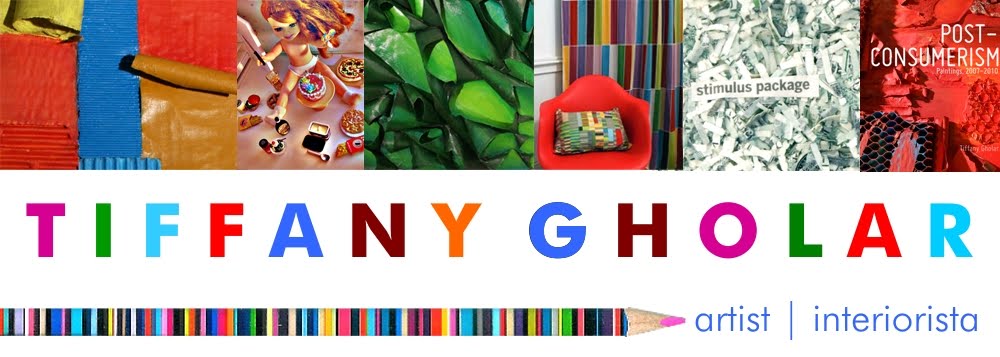My favorite part of the Rashid Johnson exhibit was his photography.
 |
| Rashid Johnson, The New Negro Escapist Social and Athletic Club (Emmett), 2008 |
 |
| Rashid Johnson, Self Portrait as the Professor of Astronomy, Miscegenation and Critical Theory at the New Negro Escapist Social and Athletic Club Center for Graduate Studies, 2008 |
 |
| Rashid Johnson, Self-Portrait with my hair parted like Frederick Douglass, 2003 |
What exquisite portraits! The reference to W.E.B. DuBois' concept of double consciousness made them all the more profound. I also like the way in which the portraits show a variety of African-American men. He wants to tell the world that there is no singular "Black Experience" and I think his work exemplifies that.
There is also a great sculpture of cross hairs, a reference to the logo for NWA that is also symbolic of the urban violence that has taken the lives of so many young Black men. In perhaps one of the best art label captions I've read so far, the text says that it is unclear which side of the cross hairs we are on. I am not sure who wrote that, but they deserve some recognition for making such a direct and unpretentious statement, a rare find on art museum walls these days.
 |
| Rashid Johnson, Triple Consciousness, 2009. Black soap, wax, vinyl in album covers, spray enamel, shea butter, plant and brass |
I have to admit I'm not really a fan of most video or installation art. Perhaps all the courses I took in cinema studies and interior design have made me expect something different from what is typically shown in art museums. I was amused, however, at Johnson's use of things like Al Green and Bob James LPs and shea butter in his installations. The little vignettes he put them in reminded me of the living rooms of older people I've known who haven't made renovations since the 70s, giving their homes the feeling of a time capsule. He calls his process “hijacking the domestic" and I can definitely see that in his work. Also, since his work is inspired by hip-hop, including those particular albums makes sense because both Al Green and Bob James have had many of their songs sampled by hip-hop artists.
The Phantom Limb show made me smile because the first piece I saw was by one of my favorite artists, Robert Rauschenberg.
I also really liked this untitled piece by Richard Jackson. He used the smaller canvases to smear paint on the larger ones, avoiding paint brushes altogether.
Shows like this one help me to keep an open mind about what painting and art really mean, and show me possibilities I may not have considered before.
Message To Our Folks will run until August 5th and Phantom Limb is on display until October 21st. Admission is free on Tuesdays for Illinois residents, and annual memberships are definitely worth it.



No comments:
Post a Comment